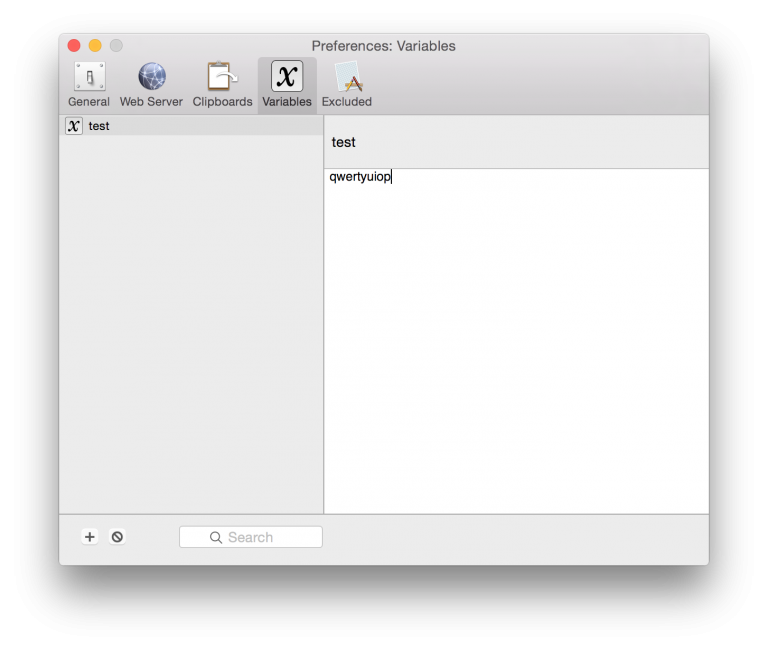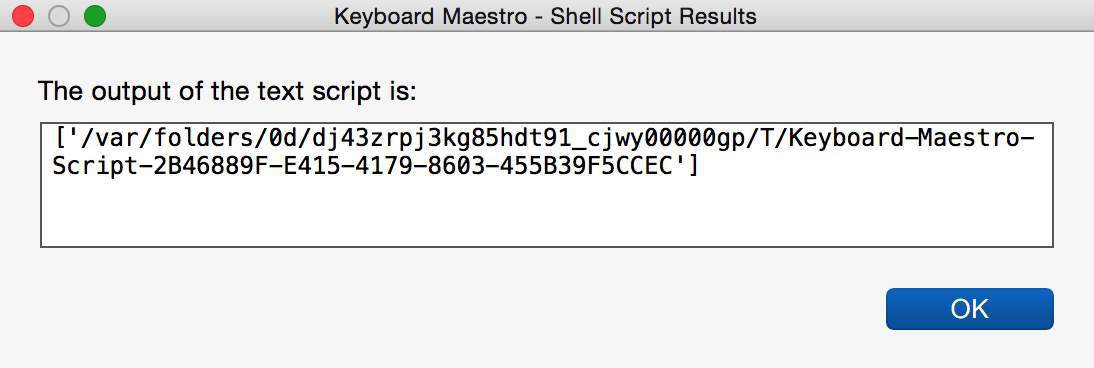
- KEYBOARD MAESTRO EXECUTE IN INTERACTIVE SHELL HOW TO
- KEYBOARD MAESTRO EXECUTE IN INTERACTIVE SHELL INSTALL
- KEYBOARD MAESTRO EXECUTE IN INTERACTIVE SHELL SOFTWARE
This solution doesn't involve patching the keyboard driver, but gives you a Vim specific solution. Enable ‘Change Caps Lock’ and set the keycode to 53.Go to PCKeyboardHack in System Preferences.
KEYBOARD MAESTRO EXECUTE IN INTERACTIVE SHELL INSTALL

Put these codes or'd with the hex value 0x700000000 in the source and dest like this: hidutil property -set ' If that sounds good to you, take a look at hidutil.įor example, to remap caps-lock to escape, refer to the key table and find that caps-lock has usage code 0x39 and escape has usage code 0x29. No need to install any 3rd-party crap like PCKeyboardHack / Seil / Karabiner / KeyRemap4MacBook / DoubleCommand / NoEjectDelay.No need to fiddle around with system GUIs.In macOS Sierra 10.12, Apple introduced a new way for users to remap keys. I wasn't happy with any of the answers here, and went looking for a command-line solution. These utilities offer unlimited flexibility when remapping the Mac keyboard. After a little tweaking I have mine set to toggle the AirPort Wifi. PQRS also has a great utility called NoEjectDelay that you can use in combination with KeyRemap4MacBook for reprogramming the Eject key. Here's a screenshot to show a few of the (hundreds of) pre-selectable options: I have no affiliation with them but I've been using these tools for a long time and have to say the guys over there have been doing an excellent job maintaining these, adding features and fixing bugs. If you like these tools you can make a donation. You may also want to check out KeyRemap4MacBook which is actually the flagship keyboard remapping tool from - it's also free. In the popup dialog set Caps Lock Key to No Action:Ģ) Now, click here to download Seil and install it:ģ) After the installation you will have a new Application installed ( Mountain Lion and newer ) and if you are on an older OS you may have to check for a new System Preferences pane:Ĥ) Check the box that says "Change Caps Lock" and enter "53" as the code for the escape key:Īnd you're done! If it doesn't work immediately, you may need to restart your machine. First, go into the System Preferences, choose Keyboard, then the Keyboard Tab (first tab), and click Modifier Keys:.
KEYBOARD MAESTRO EXECUTE IN INTERACTIVE SHELL HOW TO
Here's my attempt at a comprehensive, visual walk-through answer (with links) of how to achieve this using Seil (formerly known as PCKeyboardHack).
KEYBOARD MAESTRO EXECUTE IN INTERACTIVE SHELL SOFTWARE
Thus it is no longer necessary to install third-party software to achieve this. Here's a significantly upgraded version of the macro that uses the Terminal.app to acquire the $PATH.Edit: As described in this answer, newer versions of MacOS now have native support for rebinding Caps Lock to Escape. Since this setting is can be deleted deliberately or accidentally, and since I need to have a default path occasionally for testing – I have a macro to recreate it for me. opt/local/bin:/opt/local/sbin:/Users/chris/perl5/bin:/usr/local/bin:/usr/bin:/bin:/usr/sbin:/sbin:/opt/X11/bin:/Library/TeX/texbin Then paste the result into a variable in Keyboard Maestro named ENV_PATH. Paste echo $PATH | pbcopy in the Terminal.app and run it. That's the same as Keyboard Maestro's default $PATH: /usr/bin:/bin:/usr/sbin:/sbin:Īnd the same as AppleScript's default $PATH: set shCmdStr to "echo $PATH"Īll you have to do to replicate the altered system path on your machine in Keyboard Maestro is to:

I believe the default macOS system $PATH is: /usr/bin:/bin:/usr/sbin:/sbin

Hey think that would violate Apple's User Interface Guidelines.


 0 kommentar(er)
0 kommentar(er)
